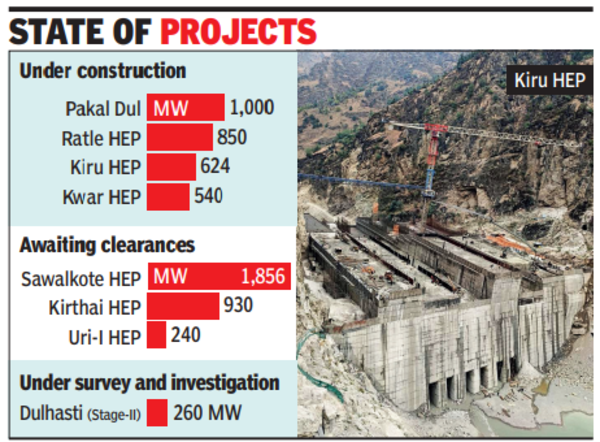- News
- India News
- India prepares dams to store more water, lines up multiple actions to choke Pak
Trending
India prepares dams to store more water, lines up multiple actions to choke Pak
Following the suspension of the Indus Water Treaty, India has initiated flushing and desilting of reservoirs on the Chenab River to improve water storage for the winter months. This action is part of a broader strategy to regulate the flow of western rivers into Pakistan. India also plans to expedite hydropower projects and explore additional measures to maximize water utilization.
NEW DELHI: Limited flushing and desilting of reservoirs of two run-of-the-river hydro-power projects - Baglihar and Salal - on the Chenab river in Jammu and Kashmir—are being undertaken by India in an immediate move to prepare them for storing and regulating flow of water to Pakistan during the winters. More dams will undergo the process in coming days to ensure better storage in India.The move is part of the country’s detailed roadmap, prepared after suspension of the Indus Water Treaty (IWT) following the Pahalgam terror attack last month, to prevent and regulate flow of western rivers - Indus, Jhelum and Chenab - to the neighbouring country.Also read: Steps India has taken to batter Pakistan since April 22Flushing is a process to clear sediments from the reservoir by operating it in a particular way using high water flow whereas desilting can be done through dredging to remove large deposited sediment.
Poll
What should be the top priority amid rising cross-border tensions?

End of Article
Follow Us On Social Media









